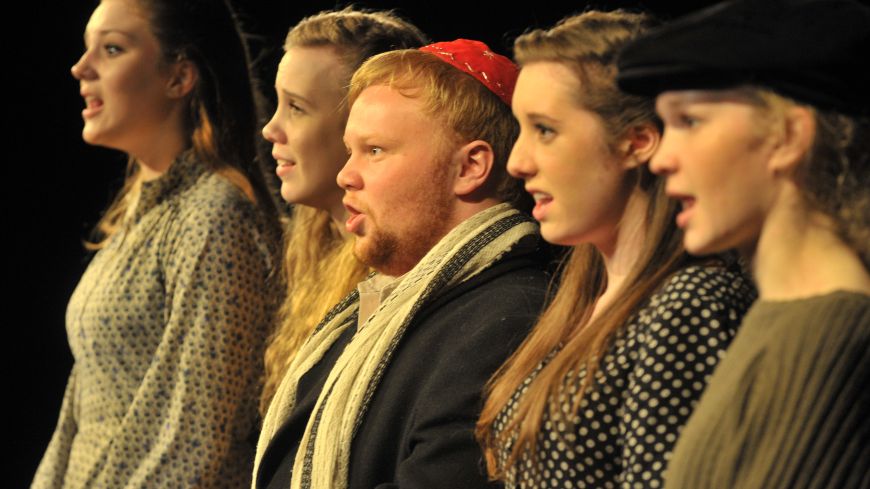
Theresienstadt was the name given to a small fortress town that became the Czechoslovakian ghetto north of Prague run by the Nazis. It housed many Jewish stars of stage, cabaret, classical music and film from all over Europe who were sent during WW ll to live there supposedly for their own protection. As theatrical performances and concerts were not banned, it stood as good Nazi propaganda and was dubbed as the village “built by Hitler for the Jews”.
Towards the end of the war, actor and director Kurt Gerron, who had starred in films with Marlene Dietrich, was persuaded by the Nazis to make an upbeat documentary film depicting Terezín as kind of paradise. The ghetto was installed with false-fronted shops, hospitals wards, classrooms and playgrounds to create a mirage so complete that an independent Red Cross team who inspected the camp was duped.
Following some extensive research, writer Philip Glassborow has created a cabaret style show that combines the making of the film and making of the propaganda façade. It uses incidents from real people who were in the camp, like Ilse Weber, as inhabitants prepare for a special cabaret to entertain the inspection team. Known as the Angel of Terezín, Weber insisted on accompanying a transport of children going East to their almost certain deaths. The play contains songs from the era, some of which were written in the ghetto itself by Weber and exposes the tension experienced between pursuing their art and colluding with Nazis to survive.
On a small, makeshift stage, the large, 19-strong cast wearing the shameful yellow stars of David have the air of warming up, except of course for the 2 who play Nazi officers. The set is made up of ladders, valises and piles of bentwood chairs with a crumpled Nazi flag and the sign Arbeit macht frei. The didactic backstory is narrated through dialogue between songs by the characters.
There seemed to be too much incongruous benign smiling from some of the cast and much of the dialogue came across as clunky, possibly because of rather rushed and badly paced speech. The brief presence of a puppet added nothing to proceedings.
In balance, the songs were beautifully sung by the pleasant voices of the cast who sang and Carol Isaacs on accordion added suitable emotion. Alannah Winn-Taylor and Catherine Boyle gave committed performances but a promising Ted Darnell-Hayes stood out in his roles, being focussed and ‘in the zone’ throughout.
Earlier this year BBC Four screened a programme Remembering the Holocaust: Defiant Requiem. It showed a re-enactment of the Terezín choir conducted by Czech conductor Rafael Schächter of Verdi’s Requiem whose text is about vengeance and judgement. It was performed in front of visiting and resident Nazi top brass as a courageous example of their defiance through music.
Despite the best of intentions, the enormous potential for poignancy is missing from this brave and earnest production that failed to match the promise of the comprehensive and beautifully produced programme whose images come from the book Art against Death, Permanent Exhibitions of the Terezín Memorial in the former Magdeburg Barracks.
Tues 12 – Sun 24 August (not 18), 12:00 noon. £8-£9 (£6-£7)

